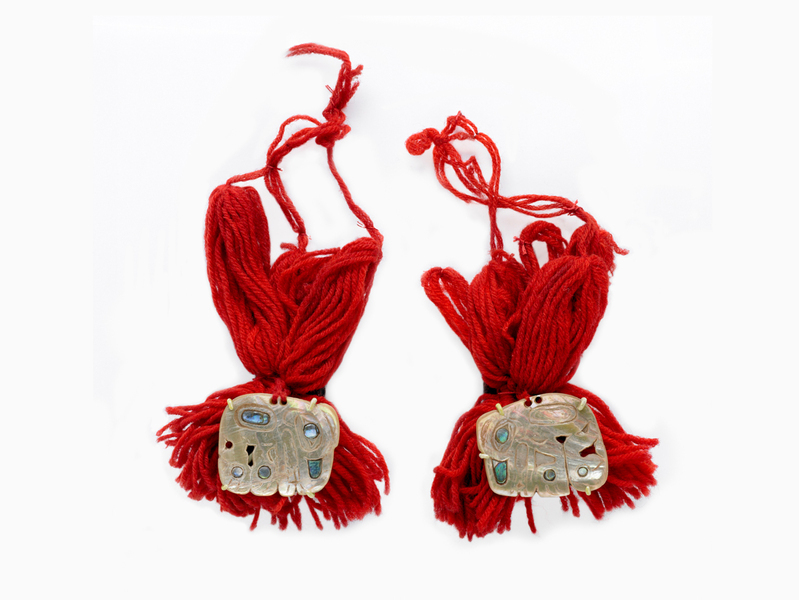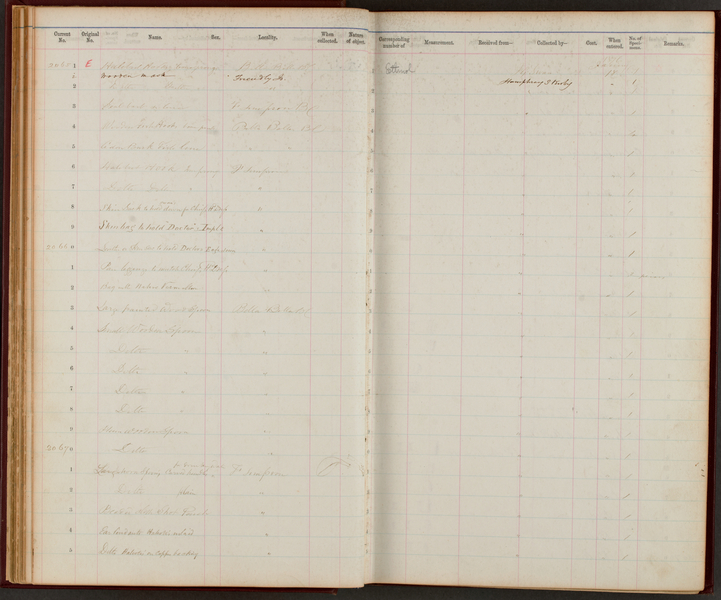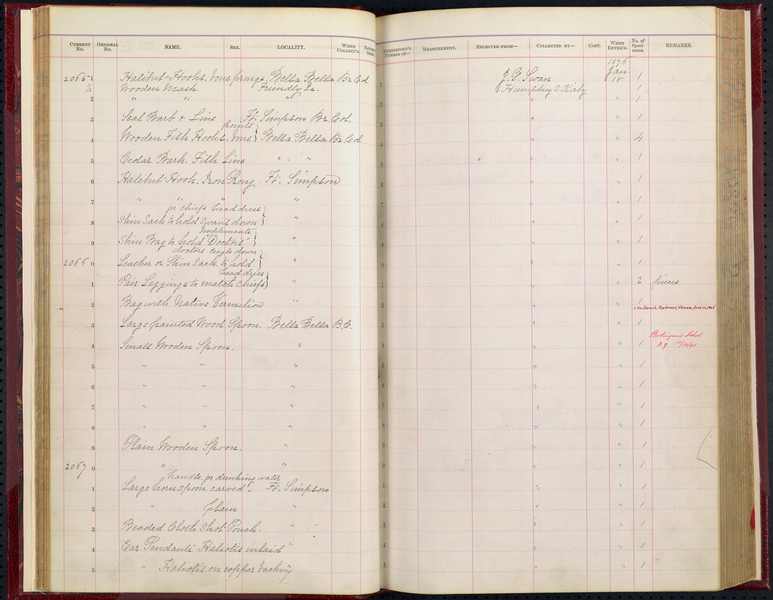Ear Ornaments Item Number: E20674-0 from the National Museum of Natural History






Notes
FROM CARD: "HALIOTIS INLAID. ILLUS. IN USNM AR, 1888, PL. 7, FIG. 23, P. 260."FROM 19TH CENTURY OR EARLY 20TH CENTURY EXHIBIT LABEL WITH CARD: "EAR ORNAMENTS.---RED SKEINS OF WOOL, TO WHICH ARE PENDANT TO-TEMS OF CARVED SHELL, HALIOTIS CALIFORNIANUS, INLAID WITH HALIOTIS KAMSCHATKENSIS. WORN BY NASSES [NASS] INDIAN, NEAR FORT SIMPSON. LENGTH, 9 INS. BREADTH, 1 1/2 INS. BRITISH COLUMBIA, 1875. 20,674. COLLECTED BY J.G. SWAN."This object is on loan to the Anchorage Museum at Rasmuson Center, from 2010 through 2027.Source of the information below: Smithsonian Arctic Studies Center Alaska Native Collections: Sharing Knowledge website, by Aron Crowell, entry on this artifact http://alaska.si.edu/record.asp?id=528, retrieved 4-24-2012: Ear ornaments or earrings. Ear ornaments made of yarn and abalone shell were a symbol of nobility. Fathers or uncles hosted potlatches to pierce the ears of their high-born children, nephews, and nieces, and the full measure of prestige was to reach adulthood with four holes on each side. The wise, elderly figure of Mouse Woman appears in Tsimshian sacred histories to offer advice to people in their dealings with supernatural beings. In payment she always asks for the person's wool earrings, which she burns and eats or takes away for lining her nest. Symbolically, ear perforations were connected with hearing, understanding, and wisdom of the kind that Mouse Woman offered.
Item History
- Made in Fort Simpson, British Columbia, Canada
- Collected by James G. Swan in Fort Simpson, British Columbia, Canada
- Received during 1876
What
- Name
- Ear Ornaments
- Identification Number
- E20674-0
- Type of Item
- earring
Who
- Culture
- Tsimshian, Nass River ? and Nisga'a ?
- Field Collector
- James G. Swan
Where
- Holding Institution
- National Museum of Natural History
- Made in
- Fort Simpson, British Columbia, Canada
- Collected in
- Fort Simpson, British Columbia, Canada
When
- Acquisition Date
- during 1876
Other
- Accession Number
- 004686